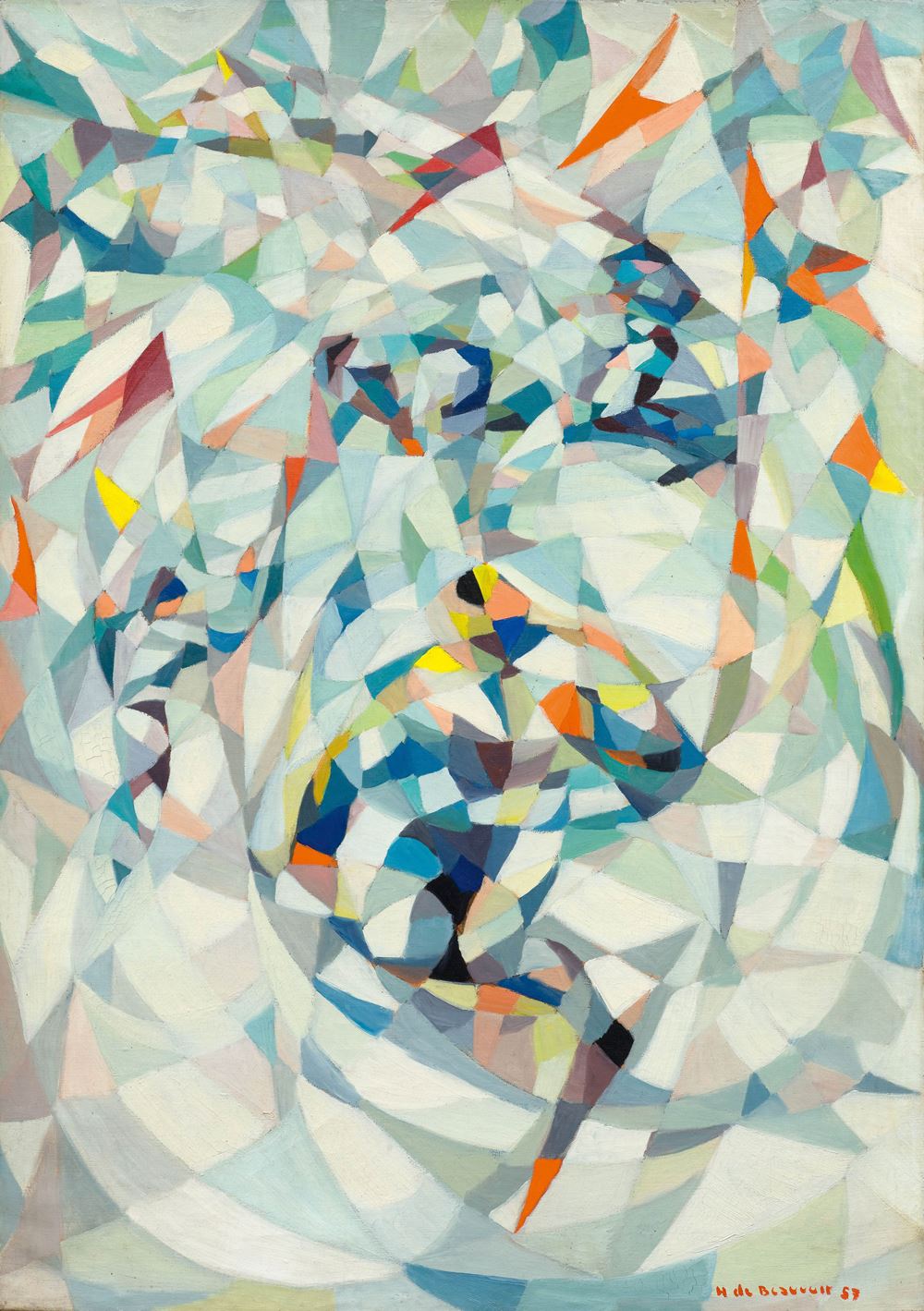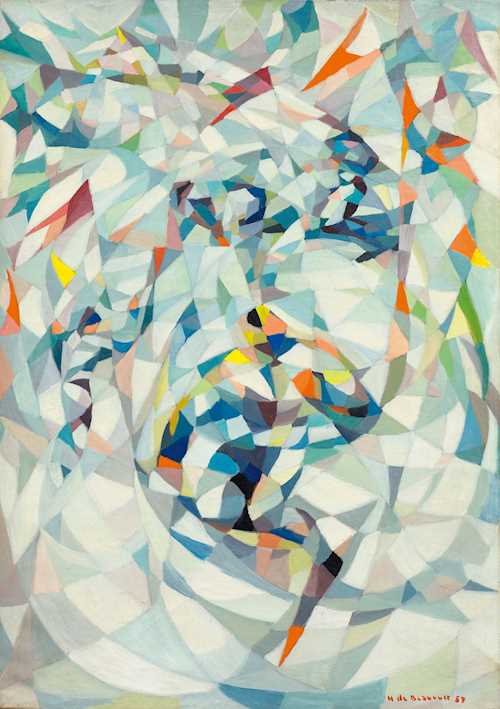
Lot 3402* - A201 PostWar & Contemporary - jeudi, 30. juin 2022, 17h00
HÉLÈNE DE BEAUVOIR
- Artist's studio.
- Private collection Munich.
Born in Paris in 1910, the French painter Hélène de Beauvoir was, together with her older sister Simone de Beauvoir, an important protagonist within feminism. Where one expressed herself in words, the other found expression in the medium of painting. She experienced the social and political changes of the 20th century, fought for her education and the recognition of her profession, and campaigned for women throughout her life. Having received a conservative education at a Catholic boarding school for girls, she soon cast off the shackles of convention and sought her own path as an artist. Her talent for drawing became apparent early on and in 1928 she was admitted to the art school École Art et Publicité. In 1936 she had her first solo exhibition in Paris.
In her creative engagement with the currents of the 20th century, Hélène de Beauvoir arrived at her own compelling formal language, characterised by great freedom and poetry, and the joy of experimenting with colour, form, and technique. In her works, she combined abstract elements with figurative depictions, showing great sensitivity for man and nature. Nevertheless, she was also interested in the social and political developments of her time and actively campaigned not only artistically but also socio-politically for equality and justice. For many years she travelled the world with her husband and finally settled in Alsace in 1963, where she devoted herself entirely to her painting. Imbued with a profoundly humanitarian way of thinking, inspired by emancipatory, social, and environmental issues, she created in her paintings a very personal vision of a more humane society, which to this day has lost none of its explosiveness or poetry.
“Tous les gens qui viennent tombent en arret devant ton tableau.” Simone de Beauvoir in a letter to her sister 1960
In "Skieurs", Hélène de Beauvoir demonstrates great freedom and poetry in the interplay between abstraction and figuration and she intrigues and captivates the viewer in the manner alluded to by her sister Simone de Beauvoir, through an explosion of colour and form. Created during one of her most artistically important periods, the painting combines elements of Italian Futurism with her own lyrical use of colour, achieved through direct contemplation of the subject. The reflective brightness of the snow enters into a dialogue with the splintered vivid colour accents of the skiers and the sharp-edged crystalline forms of the mountain ranges. The sweeping sequence of repetitive curves and arcs immediately evokes the dynamic movement of skiing.
The watercolour of the rice workers (Lot 3511) illustrates another aspect of de Beauvoir's work. Showing great sensitivity for the everyday life of the workers, Hélène de Beauvoir dedicated herself to rural genre scenes of the Algarve, where she moved in May 1940. Her mastery of sketching, the lightness of the brush and the atmosphere she captured allow the viewer to participate directly in the scene. The critical perspective on the arduous living conditions of the rural population comes just as much to the fore as the beauty of nature.
CHF 10 000 / 20 000 | (€ 10 310 / 20 620)
Vendu pour CHF 23 480 (frais inclus)
Aucune responsabilité n'est prise quant à l´exactitude de ces informations.


